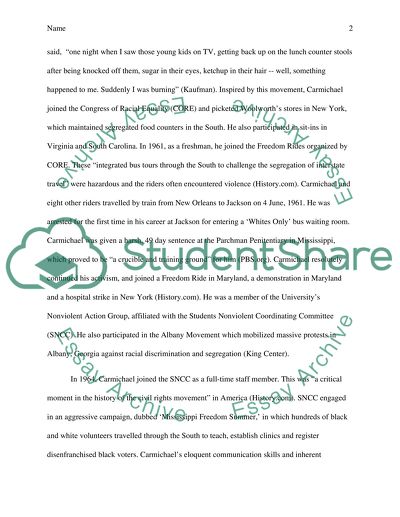Cite this document
(“Stokely Carmichael: Contribution to Civil Rights Research Paper”, n.d.)
Retrieved de https://studentshare.org/history/1476728-stokely-carmichael-contribution-to-civil-rights
Retrieved de https://studentshare.org/history/1476728-stokely-carmichael-contribution-to-civil-rights
(Stokely Carmichael: Contribution to Civil Rights Research Paper)
https://studentshare.org/history/1476728-stokely-carmichael-contribution-to-civil-rights.
https://studentshare.org/history/1476728-stokely-carmichael-contribution-to-civil-rights.
“Stokely Carmichael: Contribution to Civil Rights Research Paper”, n.d. https://studentshare.org/history/1476728-stokely-carmichael-contribution-to-civil-rights.


